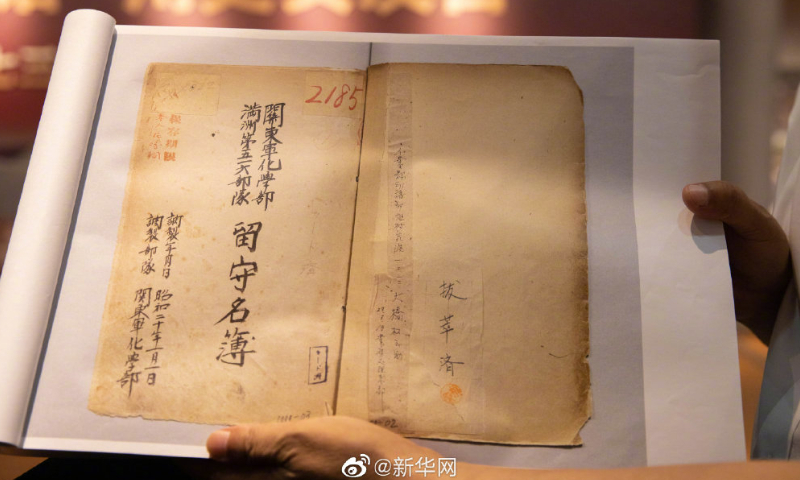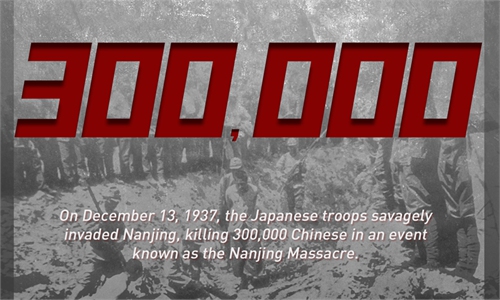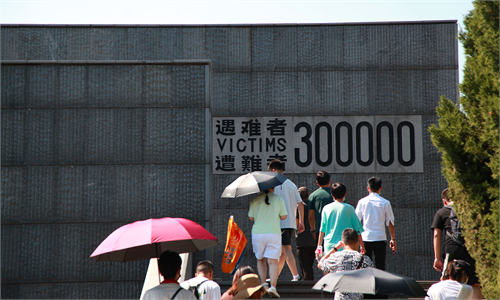Detailed information of Japanese army's notorious chemical warfare unit made public in China for first time on 77th anniversary of Japan's WWII surrender

Registration book of Japanese army's Kwantung Army Chemical Department Photo: Xinhua
The complete name list and personal information of all the 414 members of the Japanese army's Kwantung Army Chemical Department, also known as Unit 516, which researched and developed lethal chemical weapons during World War II (WWII), were made public in China for the first time on Monday, serving as important new historical evidence for the study on Japan's chemical warfare history.
Monday marks the 77th anniversary of Japan's defeat and unconditional surrender in WWII. The Exhibition Hall of Evidences of Crime Committed by Unit 731 of the Japanese Imperial Army located in Harbin, Northeast China's Heilongjiang Province, disclosed the registered information of all the 414 members of Unit 516 which the Japanese army first set up in Qiqihar, Heilongjiang, on May 11, 1939.
Unit 516 mainly focused on the research and development of a series of toxic substances, including the strong erosive mustard gas, the quick erosive lewisite, asphyxiating chloric acid gas and the application of these toxic chemical in actual combats.
According to Jin Chengmin, curator of the exhibition hall, the registration book was completed around 1945. A total of 237 pages were compiled containing 414 members' names, birthdates, household registrations, types of services, arm of the services, as well as their relatives' residences and their relationships, which can reveal the basic historical facts including the entire scale of the Unit 516 and the composition of the personnel and their ranks.
"Like the biological warfare, chemical warfare by Japan was a top-down, premeditated, well-organized and a systematic national crime which violated international morality and human conscience," Jin told media.
According to Jin, the total number of the members of Unit 516 is not 250 as was originally claimed but was as many as 414 that is so far reachable. Its core members were high-rank officers and its professionals came from medical schools and army hospitals.
While the notorious Unit 731 killed and harmed Chinese civilians with biological weapons, Unit 516 adopted chemical weapons and they were referred to as a pair of "devil brothers," Gao Xiaoyan, a research fellow with Heilongjiang Provincial Academy of Social Sciences, told media.
According to Jin, this registration book serves as essential core archives for the research on the chemical and biological warfare waged by Japan during the WWII, as well as hard evidence for the crimes committed by the Kwantung Army Chemical Department during its invasion in China.
The registration book was originally stored at Japan's Ministry of Health, Labour and Welfare and was transferred to and preserved by the National Archives of Japan Digital Archive in 2017.
It was discovered by the research team of the Exhibition Hall of Evidences of Crime Committed by Unit 731 of the Japanese Imperial Army in the process of transnational evidence collecting in Japan, and eventually obtained in April 2021 after multiple efforts.
Apart from Unit 731, the Kwantung Army's Epidemic Prevention and Water Purification Department as the unit's official name, and Unit 516, there was another Japanese unit that committed numerous crimes, Unit 100, the official name of which was the Military Animals Epidemic Prevention Department in Changchun, but its actual research and development was biological weapons and even anatomy experiments on living human beings.
During an event exposing the crimes of bacteriological warfare waged by the Japanese Army recently held at Kanagawa prefecture in Yokohama city, Japan, Takashi Ogawa, former professor from Nippon Veterinary and Life Science University, said that Unit 100 mainly researched and cultivated bacteria that human and livestock could transmit to each other, such as anthrax, and conducted the experiment of dispersal, according to media.
According to Ogawa, Unit 100 flew planes low to spread bacteria to livestock and many sheep and cows died in the experiments. The crimes of Unit 100 were not as known to the world as that of Unit 731 under the guise of military and horse epidemic prevention and were concealed by Japanese right-wing forces after the war. However, their crimes cannot be hidden forever as the evidence is overwhelming, Ogawa said.


